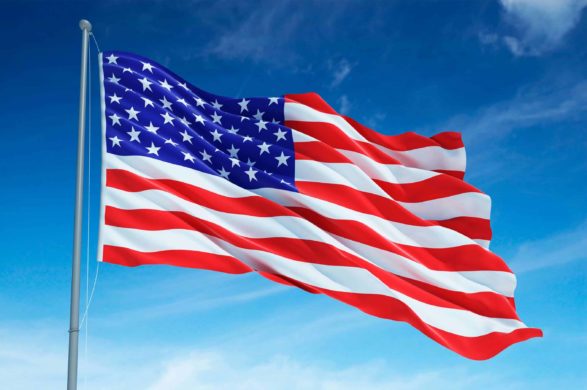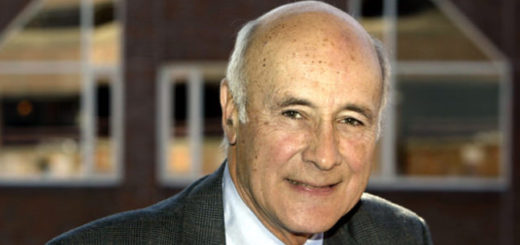RESEARCH WORK. AMERICAN FILM INDUSTRY

INTRODUCTION
In the work, great importance was given to the historical development of the American film industry, as well as its influence on the world. The characteristics of historical development сircles have been studied. In the scope of the topic, American influential films are also discussed.
American Film Industry
The American film industry, often referred to as Hollywood (from the place name of its birth), is the industry leader in the form of artistic expression that came to dominate the twentieth century and continues as a popular art form at the beginning of the twenty-first century. While the Lumiere Brothers are generally credited with the birth of modern cinema, it is indisputably American cinema that quickly became the dominant force in the industry.
Prior to the twentieth century, narrative forms were dominated by the oral, then written, and finally printed word. Cinema introduced a new visual culture. The immediacy of the medium created a system of stars with the powerful ability to influence the rest of the culture, for good or for ill. At its best, film creates visual narratives that teach and inspire as they entertain. At its worst, it titillates prurient interests and nudges its viewers to commit acts of evil and stupidity. There is no clearer barometer of cultural values and interests. For that reason, it has also been an arena of ongoing struggle between artistic freedom and artistic responsibility.
The history of American cinema is sometimes separated into four main periods: the silent era, Classical Hollywood cinema, New Hollywood, and the contemporary period (after 1980).
In the United States, the first exhibitions of films for large audiences typically followed the intermissions in vaudeville shows. Entrepreneurs began traveling to exhibit their films, bringing to the world the first forays into dramatic film making. The first huge success of American cinema, as well as the largest experimental achievement to its point, was The Great Train Robbery, directed by Edwin S. Porter.
Hollywood, also called Tinseltown, district within the city of Los Angeles, California, U.S., whose name is synonymouswith the American film industry.
Since the early 1900s, when moviemaking pioneers found in southern California an ideal blend of mild climate, much sunshine, varied terrain, and a large labour market, the image of Hollywood as the fabricator of tinseled cinematic dreams has been etched worldwide.
In 1908 one of the first storytelling movies, The Count of Monte Cristo, was completed in Hollywood after its filming had begun in Chicago. In 1911 a site on Sunset Boulevard was turned into Hollywood’s first studio, and soon about 20 companies were producing films in the area. In 1913 Cecil B. DeMille, Jesse Lasky, Arthur Freed, and Samuel Goldwyn formed Jesse Lasky Feature Play Company (later Paramount Pictures). DeMille produced The Squaw Man in a barn one block from present-day Hollywood Boulevard and Vine Street, and more box-office successes soon followed. Hollywood had become the centre of the American film industry by 1915 as more independent filmmakers relocated there from the East Coast. For more than three decades, from early silent films through the advent of “talkies,” figures such as D.W. Griffith, Goldwyn, Adolph Zukor, William Fox, Louis B. Mayer, Darryl F. Zanuck, and Harry Cohnserved as overlords of the great film studios—Twentieth Century-Fox, Metro-Goldwyn-Mayer, Paramount Pictures, Columbia Pictures, Warner Brothers, and others. Among the writers who were fascinated by Hollywood in its “golden age” were F. Scott Fitzgerald, Aldous Huxley, Evelyn Waugh, and Nathanael West.
After World War II, film studios began to move outside Hollywood, and the
practice of filming “on location” emptied many of the famous lots and sound stages or turned them over to television show producers. With the growth of the television industry, Hollywood began to change, and by the early 1960s it had become the home of much of American network television entertainment. In the 1990s computer-generated imagery (CGI) made rapid strides and became a standard feature not only of Hollywood action-adventure films but also of nearly any work that required special visual effects. Examples of landmark films utilizing the new technologies included Steven Spielberg’s Jurassic Park(1993); Independence Day (1996), directed by Roland Emmerich; and The Matrix (1999), written and directed by Larry (later Lana) Wachowski and Andy (later Lilly) Wachowski.
A notable development in American cinema was the rise of significant female filmmakers, including Kathryn Bigelow, Patty Jenkins, Sofia Coppola, and Greta Gerwig. Bigelow’s films included the cult-classic vampire movie Near Dark (1987); the police thriller Blue Steel (1989); Point Break (1991), about an undercover FBI agent; and the science-fiction drama Strange Days (1995).
Another significant development in late 20th-century American cinema was the emergence of a self-designated independent filmmovement. Its origins perhaps lay in the perceived diminution of opportunities for personal filmmaking in the post-1970s commercial industry.
To take up the slack, organizations such as the Independent Feature Project and the Sundance Film Festival in Park City, Utah, were founded to encourage and promote independent work.
In the 1990s independent directors began to develop projects that were closer in style to popular Hollywood genres such as the gangster film and post-World War II film noir.
Beyond this genre orientation, which cemented the popularity of independent films for many in the mainstream audience, the independent movement fostered what came to be called niche filmmaking, which generated works growing out of ethnic and identity movements in contemporary American culture. Among these were films by African American, Native
American, and Latinx filmmakers, as well as works representing feminist and gay and lesbian cultural viewpoints and experience.
Documentary filmmaking from these and other perspectives also thrived in the independent world. Independent nonfiction films of significance included Errol Morris’s The Thin Blue Line (1988), an exploration of a miscarriage of justice in a Dallas murder case; Hoop Dreams (1994), by Steve James, Frederick Marx, and Peter Gilbert, concerning the struggles of two young African American basketball hopefuls in Chicago.
The process of Americanisation in global entertainment is the influence American culture has on other countries outside of the US. The term is commonly used by critics, in the target countries, who are against the influences. However, the US film industry has managed to spread itself across the globe by filming in foreign locations and adapting its content to suit a wider stretch of audiences. Thus, lately more scholars point to the internationalisation of US firms being the more probable explanation of US global dominance. This paper determines that the global spread of US films and influences does not simply reflect an Americanisation of cinema audiences around the world but must also be attributed to the internationalisation of US firms.
Origins of Hollywood’s dominance really dates from World War One with the emergence of the feature film. Films became longer and storytelling became the dominant form. By 1915 over 600 feature films were produced annually in the United States.
Americanisation is a term that has been used since the early 20th century (Moffett, 1907) which refers to the influence American culture has on other countries outside of the US. It’s clear that US firms have dominated the international film industry for the last century and some scholars argue that this has led to Americanisation, with the interests of the US controlling the supply of entertainment and ultimately making their audiences more American. The culture influences often show most in areas such as fashion, phrases spoken and international baby names, to name a few.
A British Daily Express columnist in 1927 claimed that “we have several million people, mostly women, who, to all intent and purpose, are temporary American citizens” (Glancy, 2015). As Glancy notes, this suggests that the negative perceptions of the American influence were often focused on young women from working-class backgrounds whose whose “patriotism and mental fortitude were not so easily assumed”. Violaine Roussel argues that even in more recent times, American culture which is portrayed to us so often through TV and film , has cast a shadow over cultural products in much of the world. Roussel further argues that countries across Europe are having their cinemas flooded with multimillion-dollar US productions and the attempt to preserve their own artistic industries through government subsidies still fall short in comparison.
However, those who associate Hollywood with pro-American propaganda are often vague about the actual processes through which films have indoctrinated their viewers with American culture. In fact, this points back to the element of cultural discount where some consumers actually felt there was a barrier to their enjoyment rather than a selling point. In a further irony, Glancy points out that Hollywood has rarely been associated with mainstream American culture within America itself.
There are examples of American influential films: Taxi Driver, The Godfather, The Shawshank Redemption, Shlinder’s List, Casablanca
REFERENCE LIST
- https://newworldencyclopedia.org/entry/Film_industry_(United_States)
- https://britannica.com/place/Hollywood-California
- https://britannica.com/art/history-of-the-motion-picture/United-States
- https://bbc.com/culture/article/20150728-your-10-great-american-films
- https://afi.com/afis-100-years-100-movies/
- https://www.ukessays.com/essays/film-studies/how-have-us-companies-dominated-the-global-film-industry-1577.php



